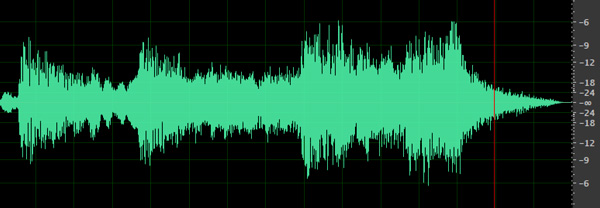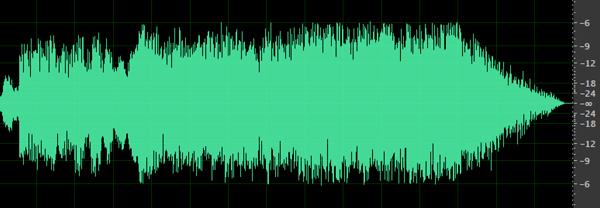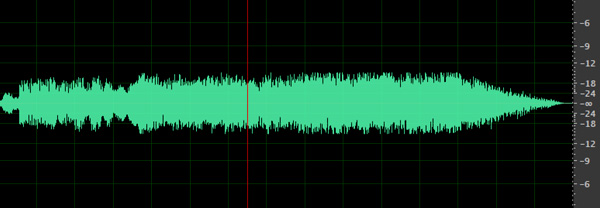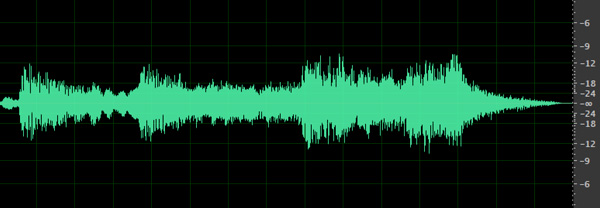Because its great! Its better for your ear and finally has much more better reproduction of audio.
In 2012, a new regulations for audio reproduction in broadcasting have been introduced by European Union. When I contacted my sound enginer, he told me on phone: „God damn! Why EBU R.128!?“ 🙂 Few months before i just met some others people who told me that the commercials in the TV is really loud. So this is a reason why i decided to write something about this issue and explain why they haven’t right about loudness in broadcasting of commercials breaks. So this is not a tip, just only ordinary article.
TV companies currently use automatic system for delivered audiovisual footages check. The system controls color data, safe zones, positioning on the tape and of course the audio layer. There are two possible results. The video can be broadcasted, or the system returns data back to you with a horrible log file with all errors and inaccuracie
Old audio regulation limits upper volume level only (ex: -6dB), that cannot be exceeded. If you get over this limit, the tape was recognized as not playable in the TV. Because the clients are relentless and want to be in the TV’s playlist the loudest and audio engineers are smart person, they start to use more and more plugins called COMPRESSORS. This tool does very simply things. Everything on the top leave them at the (ex: -6dB) and everything (almost everything, it depends on settings) put from the low to high. So result is that both files (with and without compressors) are under -6dB but one from it is subjective more loud then other. But both of them is regulary playable in broadcasting by old regulation:
A) Original sample from Cinema version:

In original sample from Cinema version we can see, that few peaks even get a little bit over the -6dB. The Cinema allow use to 0dB, but of course if is it the music cannot be all the time at the 0dB.
B) Compressed sample by old regulation:

This example show us, that every peaks is strictly under the -6dB limit. So even is it quieter than „A“ by the volume, but by subjective is it not true!
And here comes EBU R.128 rules!
In this „loudness war“ between the spectator, clients (marketing) and somewhere between them television companies come new regulation, that do not control volume but new parameter called LUFS (Loudness Units, relative to digital Full Scale). While the classic volume meter (dB) control only maximum value at the moment, the new LUFS is more than our ears. This metering system use in basically average values, not only immediate. So, therefore is much closer to the our natural perception of sound. For example you can imagine one loud gun shot, that is close to the zero dB. Its really hard sound, but is only one (or a few) so you can without problem continue watch your movie. But if we put them a 20 more copies of the exactly same sound in 2 second you will stand up and want to your money back from the Cinema owner… 🙂 And this is what the LUFS in simply way does. When you use this regulation, you have to use compressors more cautiously and your sound has much bigger dynamics. You will produce much more quality sound. Of course there is also old dB limitation, but is only for safe broadcasting = no one wants the destroy your television. 🙂
And one more thing. Someone can tell that: „I’ll produce sound just like before and finally apply LUFS correction on it“. It’s also a process, but when you have used compressors, the LUFS metering recognize it and your final export’s sound level will be lover than sound without it:
C) EBU R.128 export maked from compressed file

In this example you can see, that maximum dB value is -14,5dB.
D) EBU R.128 export maked from original cinema file

This one without compressor has more dynamics and the highest value is -9,5dB, but both of them have the same EBU R.128 (-23LUFS).
Do sound better than radio stations!
4 Comments
Comments are closed.


Given a continuous waofverm encoded digitally, scaling the waofverm such that the peak amplitude utilizes the full digital resolution is a more accurate representation of the original analog waofverm than scaling it to use a fraction of the resolution Only with regard to dynamic range, really. It’s not more accurate , unless the given material has a dynamic range that exceeds what is possible in a given format. (A more accurate representation of the waofverm is also a function of sample rate, i.e. how many times per second a waofverm is sampled 44,100 samples/second is the norm for CDs, with 16 bits dynamic range.)A bit can represent 6 dB (a fourfold increase) of dynamic range, so a 16-bit system can represent 16 6, or 96 dB of dynamic range. Popular music may have 10-15 dB of dynamic range, which can actually be represented by 3 bits and it doesn’t really matter which 3 they are . At that point, you really are just talking about making it louder, not more accurate. Other forms of music have greater dynamic range, but 96 dB is a pretty wide range, and why most people find it acceptable. Step up to 24-bit audio, and you can represent 144 dB of dynamic range, which is approximately equal to the full range of human hearing.
Is it way how to do Best export for the televisions and be still good audible in the plastic tv’s speakers?
A simple eieerxmpnt is enough if you own both a cd player and an old-fashioned analogue record-player, and a cd and vinyl copy of the same album.Switch the source on your amplifier from cd to phono (or whatever input serves the record player) at similar points of the same track.The cd will sound louder but the extremes will have been surpressed or deleted totally to save digital disc space.The record’s playback volume will need turning up to match the actual sound emanating from the speakers, and you should hear more levels or tracks, such as hi-hat, cymbals, etc at one end, and more bass, kick-drum, etc at the other.Nowt to do with graphs and that, just personal experience.
Given a continuous waorvfem encoded digitally, scaling the waorvfem such that the peak amplitude utilizes the full digital resolution is a more accurate representation of the original analog waorvfem than scaling it to use a fraction of the resolution. Scaling beyond will result in clipping the signal and a distortion of the original sound pressure wave.Based on the area of the poster labeled dynamic , the author seems to be assuming that digital recording resolution was maximized in the early nineties and that any increases since then have resulted in clipping the signal. Indeed, this seems to be the primary criticism from the All Things Consisdered article (especially the discussion of the Beatles and Metallica).